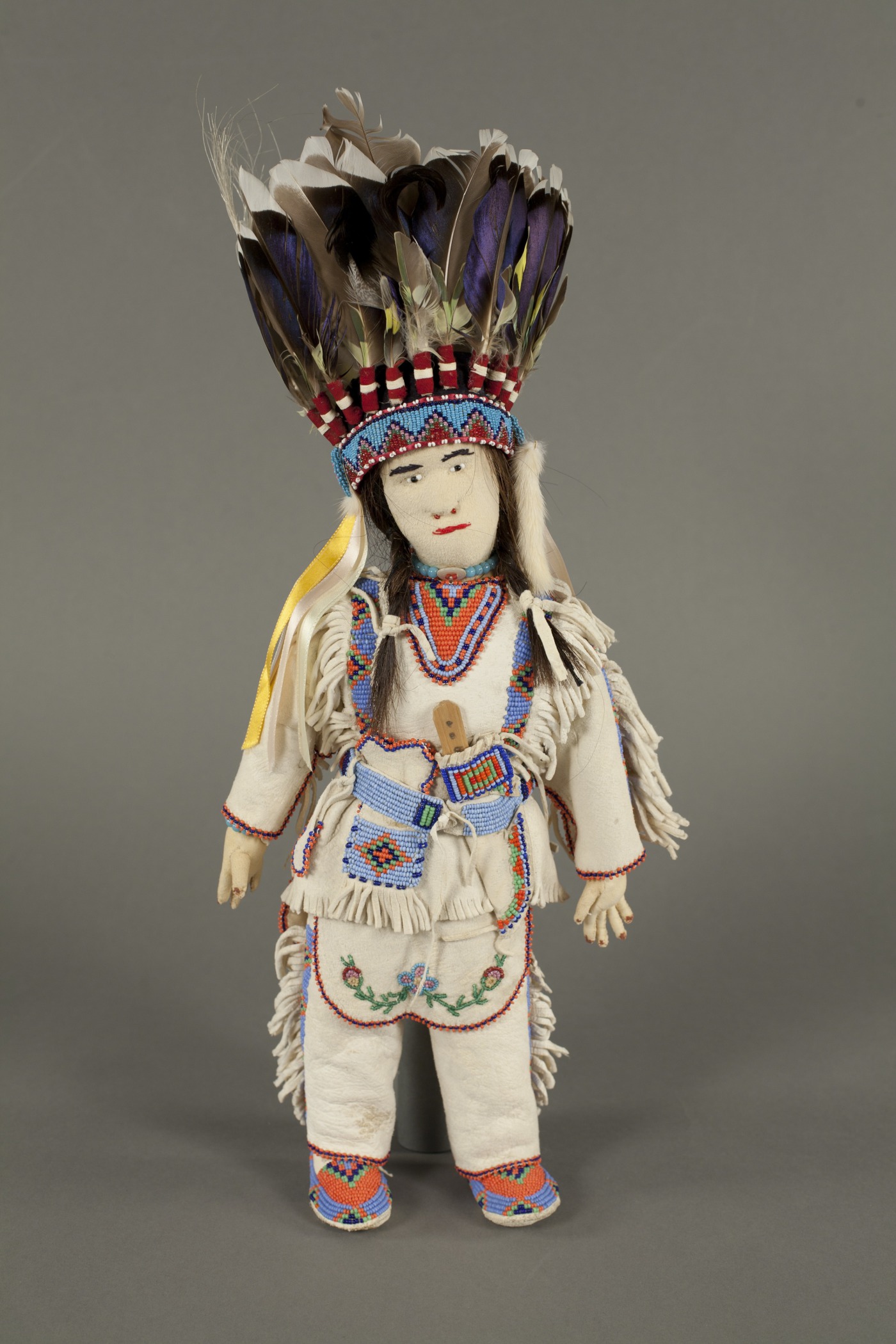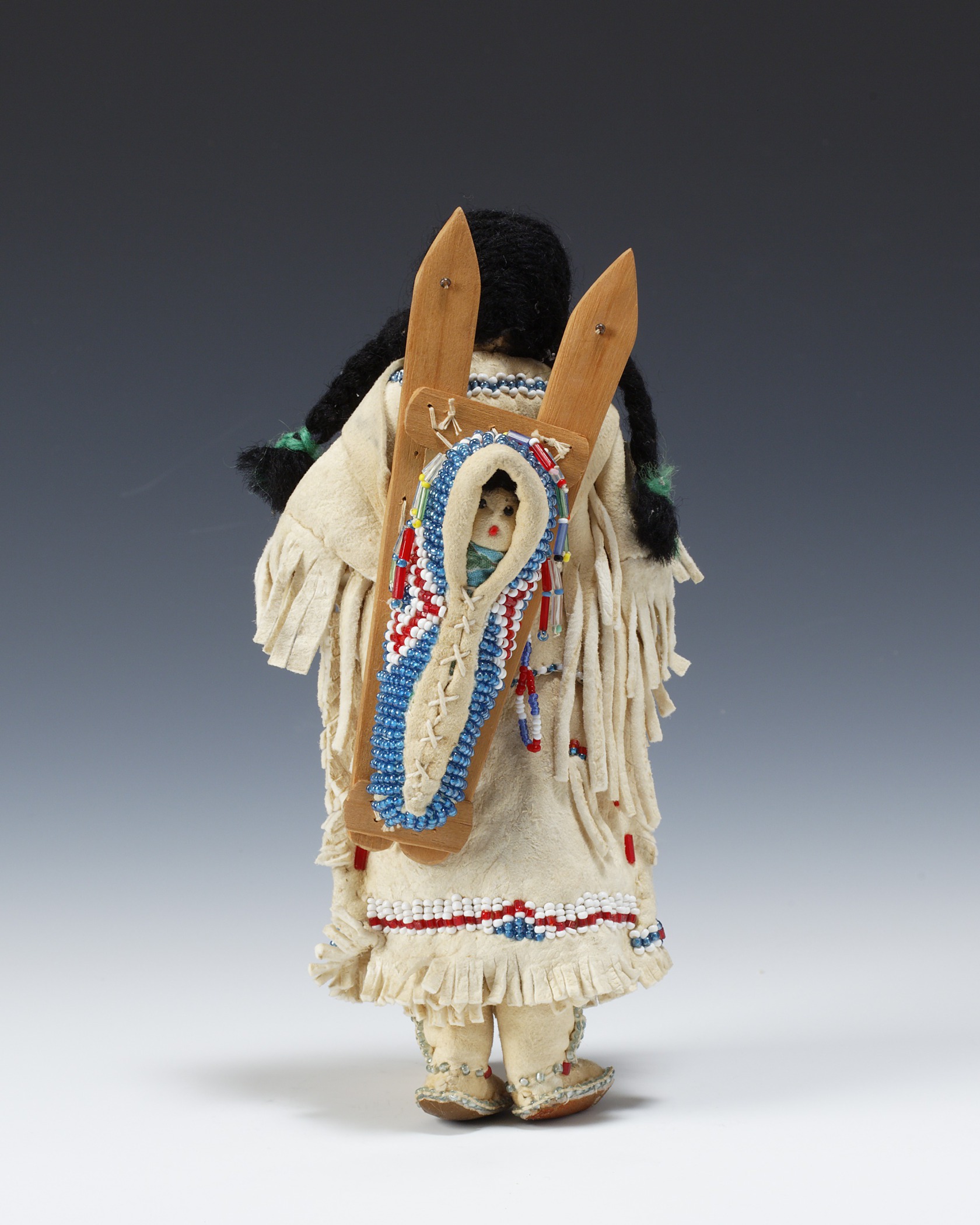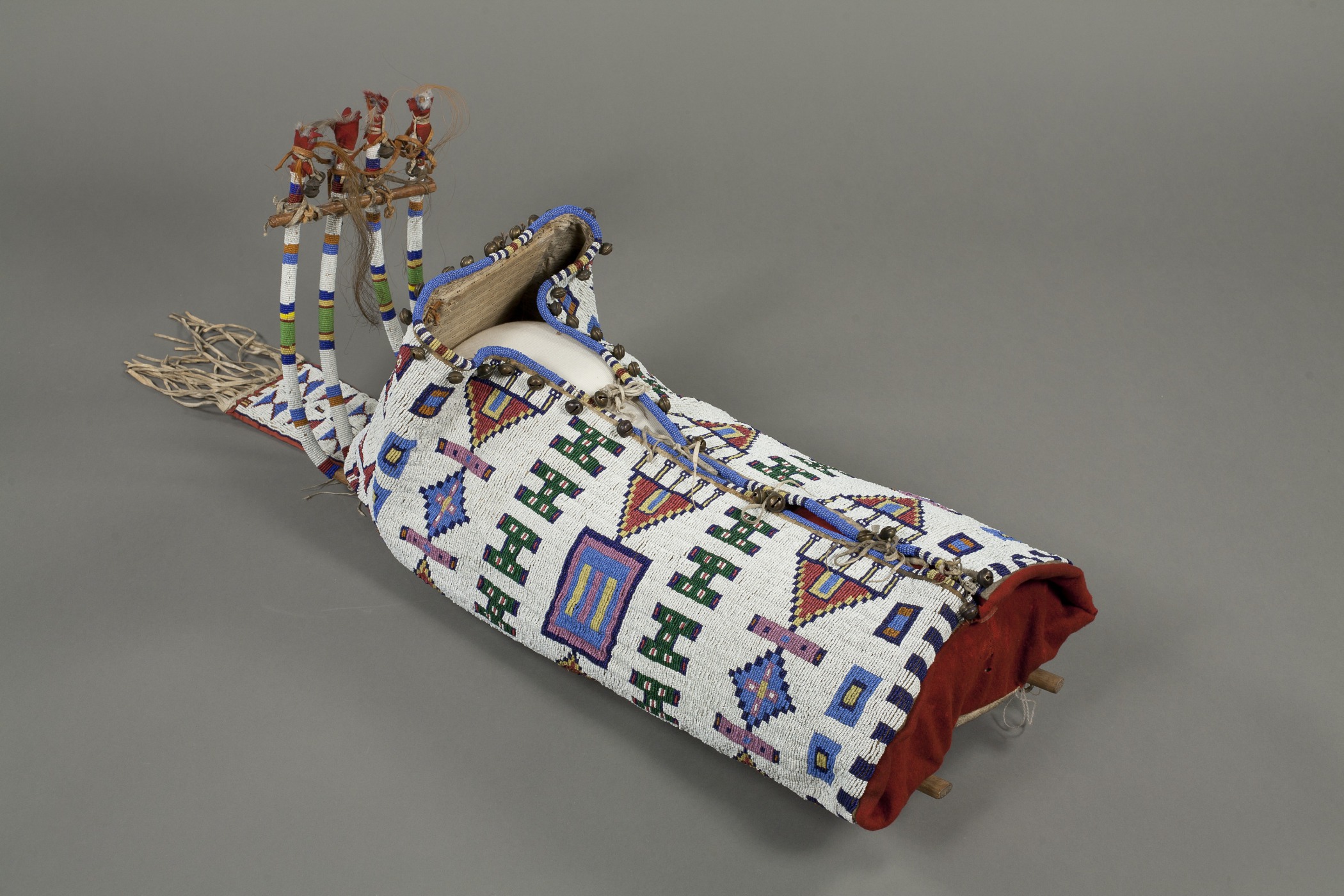May Wauqua, American (Niuam [Comanche]), 1905–1984
Doll representing a Comanche woman carrying her baby in a cradleboard
- 1946
- Native-tanned hide, glass beads, metal beads, yarn, cotton cloth, wood, canvas, commercial leather, thread, and ink
- 7 13/16 × 37 3/8 × 2 3/8 in.
Hood Museum of Art, Dartmouth College: The Wellington Indian Doll Collection, Gift of Barbara Wellington Wells; 987.35.26791
visibilityLook & DiscussHistorically, Native American artisans made dolls like these to teach young girls how to be good members of the community, how to dress properly, and how to care for a child. Later, they sold dolls to tourists.
explore the object
Tsistsistas / Suhtai (Cheyenne), toy cradleboard for a doll, about 1870. Wood, glass beads, hide, brass tacks, cotton cloth, paint, sinew, and thread, 4 3/4 × 16 1/4 × 5 1/2 in. Hood Museum of Art, Dartmouth College: Gift of Mrs. William M. Leeds; 13.13.760.
This doll (above left) is dressed in native-tanned hide with decorative beading at the hem. She wears a fringed shawl and knee-high beaded moccasins. On the Plains, women’s moccasins are higher than men’s.
The tiny doll baby is safely swaddled, and peeks out at the world. All tribes had ways of carrying their babies. The pointed prongs of this cradleboard may have been designed to protect a child from a fall.
Plains cradleboards are often elaborately beaded to show the love and joy felt at the arrival of a new baby. The beadwork is unique to each tribe. In this way, the child is literally wrapped in his tribal identity. In some communities, women still make cradleboards or hand them down as baby gifts.
This toy cradleboard (above right) was probably made by a Tsistsistas (Cheyenne) woman about 150 years ago. Although it is only 4 inches tall, it has been carefully constructed to mimic a full-sized cradleboard. A little girl might have enjoyed placing her “baby” in and out of a tiny cradleboard like this one.
learn more
In this video, novelist Louise Erdrich (Ojibwa), Dartmouth Class of 1976, speaks about her childhood memories playing with dolls from the Wellington Collection, now in the Hood Museum of Art's collection.
For an excellent teacher resource on Native American dolls, access the Fall 2004 issue of Smithsonian in Your Classroom by the The National Museum of the American Indian.




